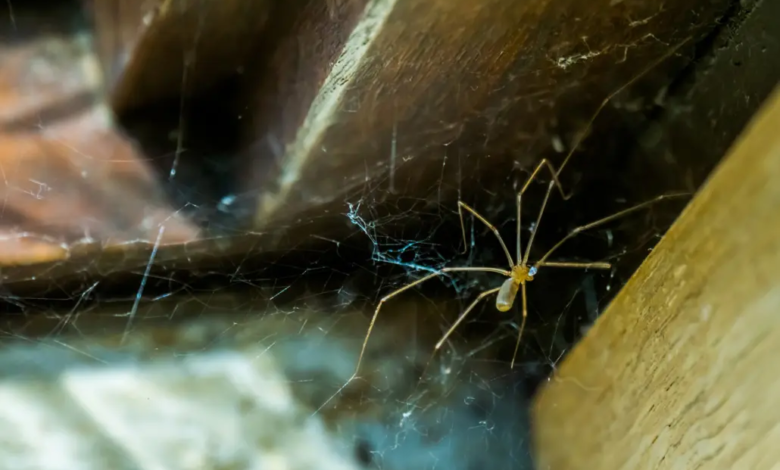Spider Season Secrets: What Changing Weather Means for Indoor Infestations

As the seasons shift, so does the behavior of the pests around us. Among the most misunderstood of these are spiders. While often portrayed as lone, creepy intruders, spiders are highly attuned to changes in temperature, humidity, and food availability—all of which dictate when and why they start moving indoors.
Most homeowners only begin to notice spider activity in early fall or late spring, but by the time they’re visible, the infestation has usually been brewing for weeks. Understanding the timing and conditions that lead to increased spider presence can help you take smarter, more proactive steps toward prevention and spider control.
Weather Patterns and Spider Migration
Spiders are cold-blooded creatures, meaning their activity is closely tied to environmental temperatures. During warmer months, they thrive outdoors—hiding under rocks, living in bushes, and hunting around gardens. However, as temperatures begin to drop, many species seek shelter, warmth, and steady food sources.
That’s when your home becomes an attractive option.
Early autumn and early spring are two peak seasons for spider migration into buildings. The shift in weather triggers nesting behavior, mating cycles, and the search for stable indoor climates. These transitions are also when insects—their main food source—move inside, creating a convenient buffet.
Why Fall Is the Real Trouble Spot
Fall spider infestations are often more severe than those in spring. The reason? Mating season.
Many species, including common house spiders and wolf spiders, begin their mating search in late summer through early fall. Males wander in search of females, leading them through vents, baseboards, and tiny cracks in siding or foundations. These males are the ones you often see scrambling across floors or ceilings.
The females, on the other hand, stay in dark, hidden corners, laying eggs that will hatch weeks later. Without proper spider control, one visible spider in the fall can lead to dozens more by winter.
Indoor Habitats: What Are Spiders Looking For?
Contrary to myth, spiders don’t invade homes in search of humans. They’re after conditions that help them survive and reproduce. Here’s what makes your home so appealing:
- Undisturbed spaces like attics, basements, and behind furniture
- Consistent temperatures during cold or hot spells
- Access to food, including insects and moisture-attracted bugs
- Entry points like torn window screens, gaps around plumbing, or unsealed vents
Spiders don’t chew or destroy—they sneak, climb, and settle. That makes visual detection difficult, especially in cluttered or underused areas.
How Seasonal Shifts Increase Pest Pressure
When spiders come inside, they often follow other insects. Seasonal weather patterns—drought, rain, temperature drops—drive many pests indoors in clusters. Flies, beetles, ants, and silverfish all become more active during certain months, which means spider populations tend to follow them closely.
This is where the overlap between pest control and spider control becomes clear. If your home already has other pest activity, it acts like a neon sign for spiders looking for reliable prey.
For this reason, reducing overall insect presence is a key preventive step—not just for your comfort, but to keep predators like spiders from sticking around.
Mistakes That Invite Seasonal Infestations
It’s easy to assume that sealing up in winter is enough to stop pests from entering. But many spider infestations begin during months when windows are open, garage doors are left ajar, or yard work stirs up outdoor webs.
Here are common seasonal missteps that contribute to spider presence:
- Bringing in firewood or patio furniture without inspection
- Storing cardboard boxes in basements or garages
- Leaving exterior lights on overnight, which attract insects
- Letting vegetation overgrow near walls or eaves
Correcting these habits is as important as direct treatment. Prevention isn’t just about stopping spiders—it’s about denying them the habitat they prefer.
When DIY Fails to Deliver
Store-bought sprays and sticky traps may catch a few wandering spiders, but they won’t stop a full seasonal invasion. The majority of spiders prefer hiding in wall voids, behind insulation, or in ceiling corners—not in open spaces where these products are applied.
Additionally, not all spider species respond to the same treatments. Without species identification and proper placement, DIY solutions often waste time and money without reducing the underlying issue.
That’s why professional pest control services in Boise focus on integrated methods: identifying pressure points, sealing entries, and treating areas of harborage—not just killing what’s already visible.
Spider Bites Are Rare—but Presence Is Enough
It’s worth noting that most spiders are harmless. Bites are rare, and the majority of species are non-aggressive. However, that doesn’t mean they should be ignored.
Spiders still leave behind webs, egg sacs, and droppings. Their presence can be unsettling, especially for children or those with phobias. More importantly, infestations can indicate larger pest issues that go unnoticed until damage is already underway.
The goal of spider control isn’t to fear spiders—it’s to restore clean, safe, and comfortable living spaces.
What to Do as Seasons Shift
As the weather changes, your pest prevention strategy should evolve with it. Here are practical steps to help reduce spider activity:
- Inspect and seal all entry points, including around cables and plumbing
- Vacuum regularly in corners, ceilings, and under furniture
- Declutter basements, attics, and garages to remove harborage
- Use dehumidifiers in damp areas to reduce moisture-loving insects
- Replace outdoor lighting with yellow-toned bulbs to reduce insect draw
Consistency is key. Seasonal maintenance every spring and fall can drastically reduce indoor pest populations and lower spider attraction overall.
Final Note
Spiders don’t follow a calendar, but their behavior is shaped by the seasons. Whether it’s cooling temperatures, increased prey, or mating cycles, changing weather means your home becomes a more attractive target twice a year.
Understanding how and why these patterns happen allows you to act before infestations grow—and to avoid relying on reactive treatments that only scratch the surface.
Your best defense is a combination of awareness, prevention, and professional intervention. With thoughtful preparation, seasonal shifts don’t have to mean unwanted house guests.



